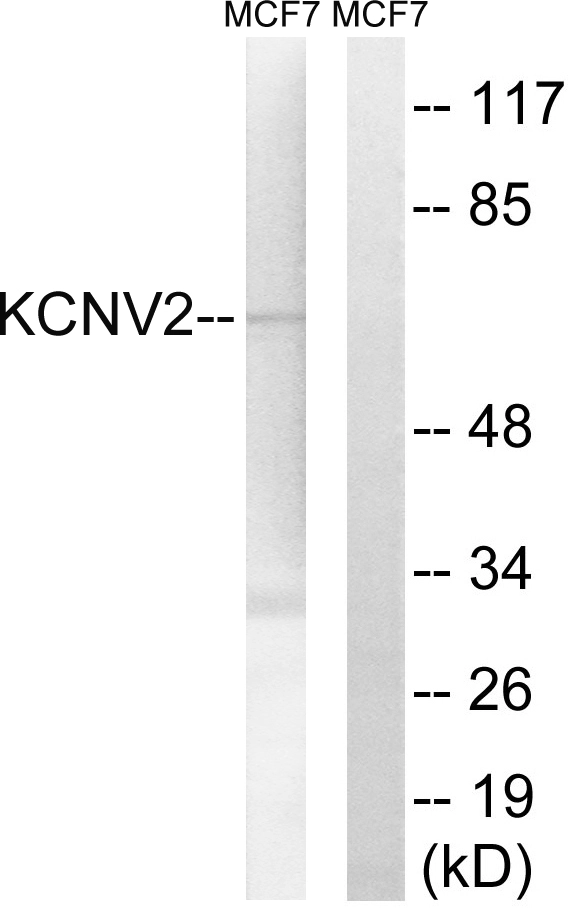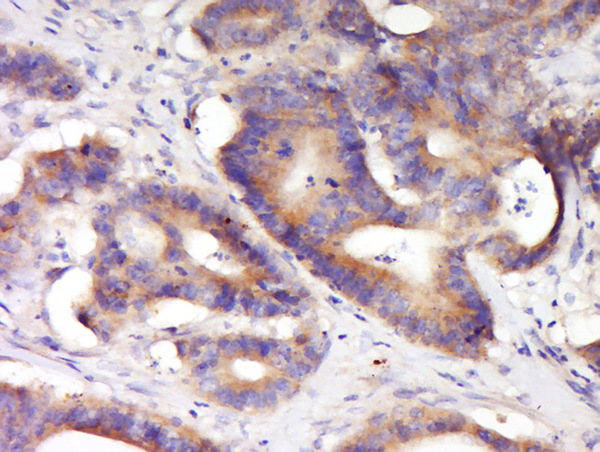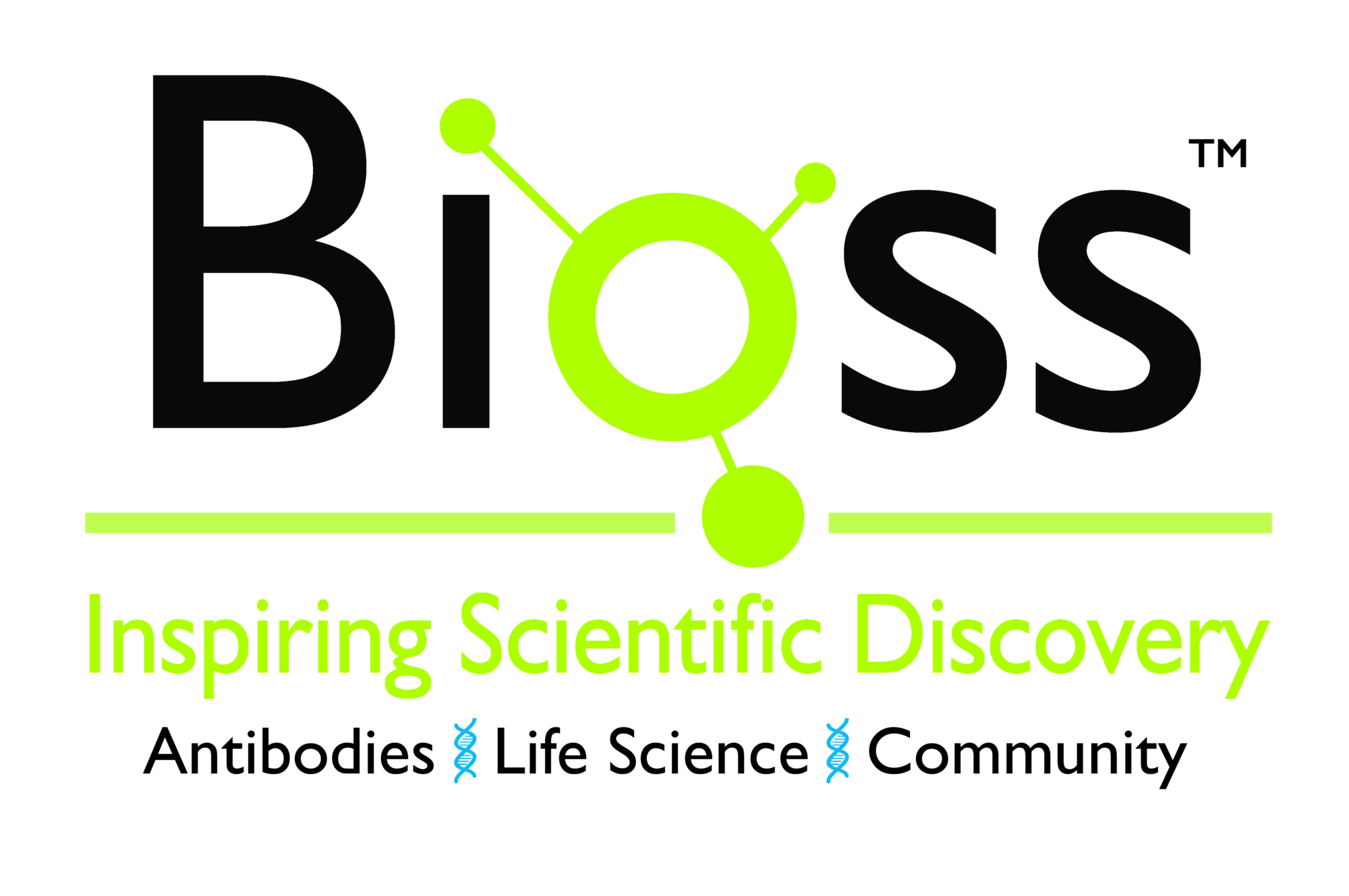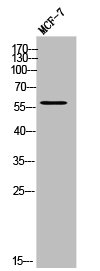
WB analysis of MCF-7 cell lysates using GTX87208 KCNV2 antibody. The lane on the right is blocked with the synthesized peptide.
KCNV2 antibody
GTX87208
ApplicationsWestern Blot
Product group Antibodies
TargetKCNV2
Overview
- SupplierGeneTex
- Product NameKCNV2 antibody
- Delivery Days Customer9
- Application Supplier NoteWB: 1:500~1:1000. *Optimal dilutions/concentrations should be determined by the researcher.Not tested in other applications.
- ApplicationsWestern Blot
- CertificationResearch Use Only
- ClonalityPolyclonal
- ConjugateUnconjugated
- Gene ID169522
- Target nameKCNV2
- Target descriptionpotassium voltage-gated channel modifier subfamily V member 2
- Target synonymsCDSRR, KV11.1, Kv8.2, RCD3B, potassium voltage-gated channel subfamily V member 2, potassium channel, subfamily V, member 2, potassium channel, voltage gated modifier subfamily V, member 2, voltage-gated potassium channel subunit Kv8.2
- HostRabbit
- IsotypeIgG
- Protein IDQ8TDN2
- Protein NamePotassium voltage-gated channel subfamily V member 2
- Scientific DescriptionVoltage-gated potassium (Kv) channels represent the most complex class of voltage-gated ion channels from both functional and structural standpoints. Their diverse functions include regulating neurotransmitter release, heart rate, insulin secretion, neuronal excitability, epithelial electrolyte transport, smooth muscle contraction, and cell volume. This gene encodes a member of the potassium voltage-gated channel subfamily V. This member is identified as a silent subunit, and it does not form homomultimers, but forms heteromultimers with several other subfamily members. Through obligatory heteromerization, it exerts a function-altering effect on other potassium channel subunits. This protein is strongly expressed in pancreas and has a weaker expression in several other tissues. [provided by RefSeq, Jul 2008]
- Storage Instruction-20°C or -80°C,2°C to 8°C
- UNSPSC12352203







